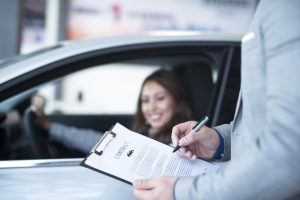The motorcycle oil change cost can vary significantly based on several factors, and understanding these variables can help you make more informed decisions about your motorcycle’s care. This article delves deep into the intricacies of motorcycle oil changes, providing you with detailed insights on costs, procedures, and the importance of regular oil changes.
Factors that Impact Your Motorcycle Oil Change Price
Several factors can influence the motorcycle oil change cost. These include the type of oil used, the engine size, the motorcycle make and model, labor costs, and whether additional services are bundled with the oil change. Here’s a closer look at these factors:
Type of Oil
Motorcycle oils come in three main types: mineral, synthetic, and semi-synthetic. Each type has different properties and price points:
- Mineral Oil: The most basic and least expensive type.
- Synthetic Oil: Offers superior performance and protection, but at a higher cost.
- Semi-synthetic Oil: A blend of mineral and synthetic oils, balancing performance and price.
Engine Size and Type

Larger engines often require more oil, which increases the cost. Additionally, high-performance and specialized engines may need premium oils, further impacting the overall expense.
Make and Model
Specific models may have unique requirements or be more labor-intensive to service, affecting the total cost. High-end or rare motorcycles often come with higher maintenance costs.
Labor Costs
Labor costs can vary based on location and the expertise of the mechanic. Dealerships typically charge more than independent garages, but they might offer specialized knowledge and services.
Additional Services
Sometimes, oil changes are part of a larger maintenance package. These packages can include services like filter changes, tire checks, and brake inspections, which can increase the overall cost but provide better value and comprehensive care for your motorcycle.
Service Pricing Menu
Understanding the breakdown of costs in a standard service menu can help you anticipate expenses and budget accordingly. Here’s a typical service pricing menu for motorcycle maintenance:
Oil & Filter Change
An oil and filter change is the most basic and essential service. This procedure involves draining the old oil, replacing the oil filter, and refilling with new oil. The cost can range from $30 to $150, depending on the factors mentioned earlier.
Scheduled Maintenance
Scheduled maintenance includes a variety of checks and services recommended at specific intervals by the manufacturer. This can include:
- Fluid top-offs and replacements: Checking and replenishing brake fluid, coolant, and other essential fluids.
- Brake inspection and adjustment: Ensuring brakes are in good condition and functioning properly.
- Chain lubrication and adjustment: Maintaining the chain for smooth and safe operation.
- Battery check: Testing and, if necessary, replacing the battery.
The cost for scheduled maintenance varies widely but typically ranges from $100 to $300.
Tires
While not directly related to oil changes, tire inspection and replacement are crucial for motorcycle safety. The cost for tires depends on the type and brand but generally ranges from $100 to $400 per tire, including installation.
Typical Cost of Annual Servicing
Annual servicing often involves a comprehensive check-up and multiple maintenance tasks. The motorcycle oil change cost is just one part of this service. On average, you can expect to spend between $300 and $600 on annual servicing, depending on your bike’s needs and the service provider.
How to Check Motorcycle Oil?
Regularly checking your motorcycle’s oil level and condition is essential for maintaining engine health. Here’s a step-by-step guide:
- Warm Up the Engine: Run the engine for a few minutes to ensure the oil is warm and circulating.
- Turn Off the Engine: Allow the motorcycle to sit for a minute to let the oil settle.
- Locate the Dipstick or Sight Glass: Depending on your motorcycle, check the oil level using the dipstick or through the sight glass.
- Check the Oil Level: Ensure the oil is within the recommended range. If it’s low, top it off with the appropriate oil type.
- Inspect the Oil’s Condition: Look at the oil’s color and consistency. Dark, gritty oil indicates it’s time for a change.
Why Changing Motorcycle Oil Matters
Regular oil changes are vital for several reasons:
- Engine Lubrication: Oil reduces friction between engine parts, preventing wear and tear.
- Cooling: Oil helps dissipate heat away from the engine, preventing overheating.
- Cleaning: Oil carries away debris and contaminants, keeping the engine clean.
- Performance: Fresh oil ensures optimal engine performance and efficiency.
Neglecting regular oil changes can lead to significant engine problems and costly repairs.
What Are the Different Types of Motorcycle Oil?

Understanding the different types of motorcycle oil can help you choose the best option for your bike:
Mineral Oil
Mineral oil is derived from refined crude oil. It’s the most basic type of motorcycle oil and is generally less expensive. However, it doesn’t offer the same level of performance and protection as synthetic oils. It’s suitable for older bikes or those with simpler engines.
Synthetic Oil
Synthetic oil is engineered from chemical compounds to provide superior performance and protection. It resists breakdown at high temperatures, offers better lubrication, and keeps the engine cleaner. While more expensive, it’s ideal for high-performance and modern engines.
Semi-synthetic Oil
Semi-synthetic oil is a blend of mineral and synthetic oils. It offers a balance between cost and performance, providing better protection than mineral oil without the higher price of full synthetic.
Signs Your Bike Needs Oil Service
Recognizing the signs that your motorcycle needs an oil change can prevent damage and extend its lifespan:
- Engine Noise: Increased engine noise or knocking may indicate insufficient lubrication.
- Oil Warning Light: If the oil warning light comes on, it’s time to check and possibly change the oil.
- Dark, Dirty Oil: Oil that appears dark and gritty needs to be replaced.
- Decreased Performance: If your bike feels sluggish or less responsive, it may be due to old or insufficient oil.
What Happens if You Skip Oil Changes?
Skipping oil changes can have severe consequences for your motorcycle:
- Engine Wear: Lack of proper lubrication leads to increased wear and tear on engine components.
- Overheating: Old oil can’t dissipate heat effectively, causing the engine to overheat.
- Contaminant Build-up: Without regular oil changes, contaminants can build up and damage the engine.
- Reduced Performance: Neglecting oil changes can result in decreased engine performance and fuel efficiency.
Conclusion
Understanding the motorcycle oil change cost and the factors influencing it can help you make informed decisions about your bike’s maintenance. Regular oil changes are crucial for ensuring your motorcycle runs smoothly, efficiently, and safely. By staying proactive with maintenance, you can enjoy many years of riding pleasure.
ALSO READ: Do Pawn Shops Buy Car Parts?
FAQs
The frequency of oil changes depends on your motorcycle’s make and model, as well as the type of oil used. Generally, it’s recommended to change the oil every 3,000 to 5,000 miles or every six months.
Yes, if you have the necessary tools and knowledge, you can change your motorcycle oil yourself. However, it’s important to follow the manufacturer’s guidelines and use the correct type of oil.
The best type of oil depends on your motorcycle’s specifications and your riding conditions. Check your owner’s manual for the recommended oil type and consider synthetic oil for better performance and protection.
Changing motorcycle oil at a dealership can cost between $50 and $150, depending on the type of oil and labor costs.
Synthetic oil is more expensive because it is engineered to provide superior performance and protection. It lasts longer and performs better under extreme conditions compared to mineral oil.





